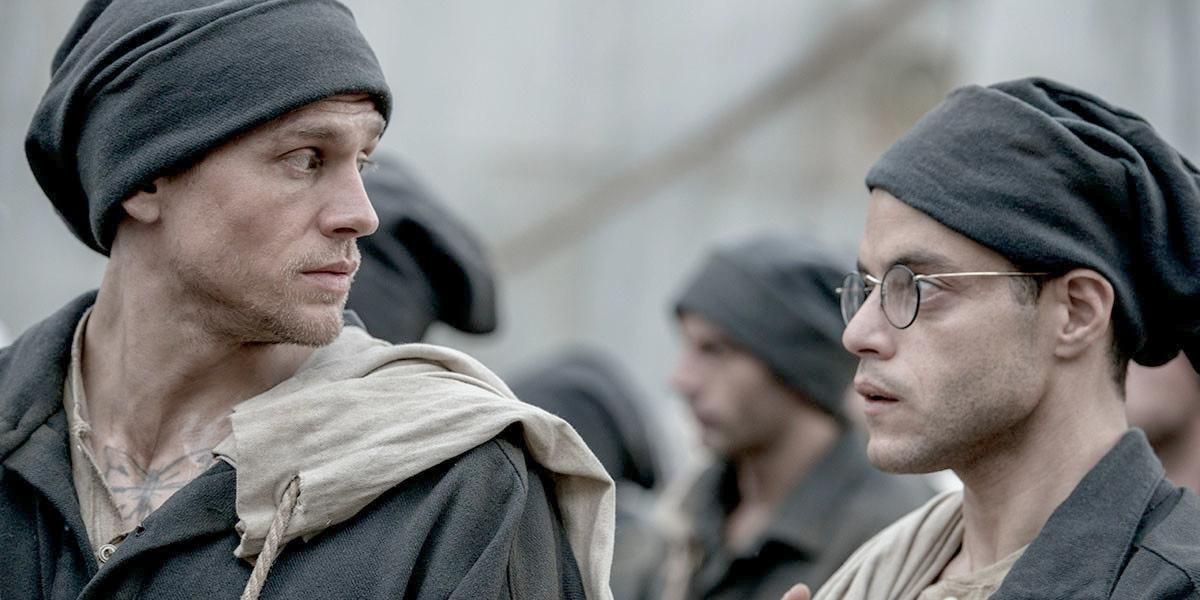Review: It’s a mystery why ‘Papillon’ remake was made

“Papillon,” a remake of the 1973 film about Devil’s Island inmate Henri “Papillon” Charriere, could be described as a prison drama, but it’s probably just as accurate to call the new movie a mystery.
The central conundrum is this: Why on earth would anyone try to improve on – let alone equal – the rousingly entertaining, if melodramatic, original? It starred Steve McQueen and Dustin Hoffman, earning McQueen a Golden Globe nomination for his gritty performance as a long-suffering French prisoner (and multiple escapee).
With a screenplay based not only on Charriere’s 1969 and 1972 memoirs, but also the first film’s screenplay by Dalton Trumbo and Lorenzo Semple Jr., this new and vastly inferior telling of the tale stars Charlie Hunnam in the title role and Rami Malek as Papillon’s fellow inmate Louis Dega, a wealthy forger who, over the course of the story, goes from being the recipient of Papillon’s protection to his dear friend. Directed by Danish filmmaker Michael Noer (“Northwest”) with enhanced levels of violence, but little feeling for the movie’s touching central relationship, “Papillon” is full of superficial adventure and shock value – an early disemboweling, regular escape attempts, a sadistic warden (Yorick van Wageningen) – but no real sense of drama. The first act of the two-hour-plus epic feels overly hasty, with the rest of it plodding along at a tedious and off-putting pace.
Papillon opens in 1931 Paris. Its safecracker antihero, whose nickname (French for “butterfly”) comes from a tattoo on his chest, has just been framed for murder, and is quickly dispatched, for life, to a penal colony in French Guyana. There, Papillon’s refusal to stay locked up gets him bumped from one hellhole to another, until he ends up on Devil’s Island. (Whether the historical Charriere ever really served time on the notoriously escape-proof rock is a matter of some dispute, and his memoirs are probably best thought of as at least lightly fictionalized.)
The film portrays Papillon’s stoic suffering through repeated, years-long stints in solitary confinement – punishment for abortive escapes – as a metaphor for the human will and the survival instinct. But despite the compelling raw material from which this yarn is spun, “Papillon” paints a surprisingly unconvincing portrait of one man’s spirit under duress.
That’s probably because Hunnam only ever seems to go through the motions of anguish, never managing to fully transfer to us what Papillon is supposed to be feeling (despite the gray hairs that pop up atop the performer’s increasingly gaunt frame). Though he’s easy on the eyes, Hunnam is not a particularly complicated performer, nor does he possess the depths of cynical resignation that were second nature to McQueen.
There’s an epilogue to the main action, in which we see Hunnam, in heavy old-age makeup, pitching his manuscript to a French publisher. “This is your story?” the publisher asks. “It’s the story of a lot of men,” says Papillon, portentously.
That makes what we’ve just seen sound like an exposé of atrocity. But the only real crime here is the debasement of a great film’s name.